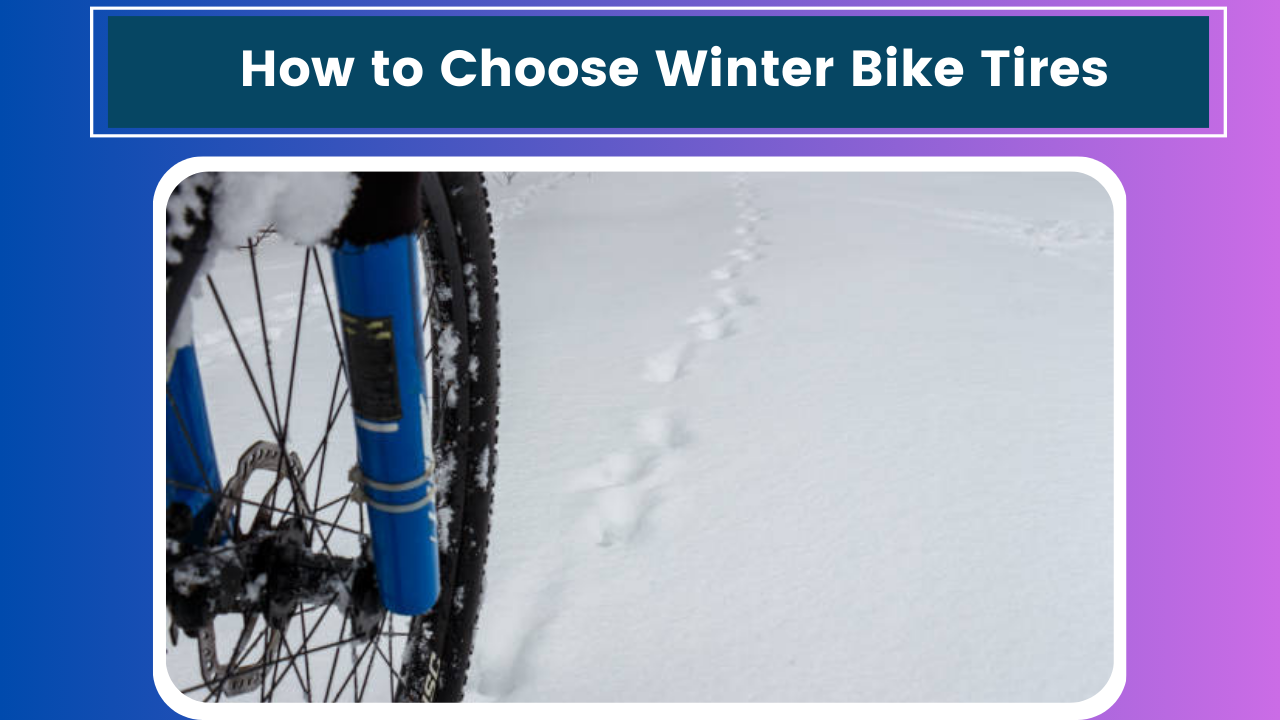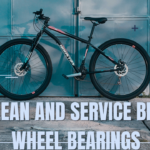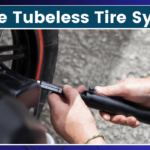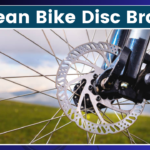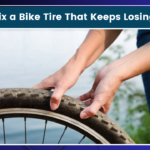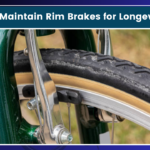As I sit here sipping my steaming mug of coffee and watching the first snowflakes of the season drift past my window, I can’t help but feel a mix of excitement and trepidation. You see, I’m an avid cyclist, and winter’s arrival means it’s time to prep my trusty bike for the challenging months ahead. If you’re like me and refuse to let a little (or a lot) of snow keep you off your bike, then you’ve come to the right place. Today, we’re diving into the world of winter bike tires – your ticket to safe and enjoyable riding all season long.
Before we get started, let me tell you a quick story. Last winter, I learned the hard way about the importance of proper winter tires. I thought my regular tires would do just fine, and boy, was I wrong. One icy patch later, I found myself sprawled out on the sidewalk, my dignity bruised along with my behind. Trust me, you don’t want to make the same mistake I did.
So, grab a warm drink, settle in, and let’s explore how to choose the perfect winter bike tires to keep you upright and rolling through whatever Mother Nature throws your way.
Winter Tire Basics
Before we dive into the nitty-gritty of choosing winter tires, it’s essential to understand what makes them different from your standard rubber.
Tread Pattern: Winter bike tires typically feature more aggressive tread patterns with deeper grooves and sometimes even metal studs. These design elements help to bite into snow and ice, providing better traction in slippery conditions.
Rubber Compound: Winter tires use softer rubber compounds that remain flexible in cold temperatures. This flexibility allows the tire to conform to the road surface better, improving grip.
Width: Winter tires are often wider than summer tires to provide a larger contact patch with the ground, which can improve stability and traction.
Now that we’ve covered the basics let’s look at the factors you need to consider when choosing your winter bike tires.
Your Winter Riding Conditions
The first step in selecting the right winter tires is to assess the typical conditions you’ll be riding in. Are you dealing with:
- Mostly dry, cold roads?
- Occasional light snow and slush?
- Regular heavy snow and ice?
- A mix of all of the above?
Your answer to this question will greatly influence the type of tire you need. For example, if you’re mainly riding on dry, cold roads, you might be able to get away with a slightly less aggressive tread pattern. On the other hand, if you’re battling constant snow and ice, you’ll want to look for tires with more substantial tread and possibly even studs.
I remember when I first moved to Chicago for work. Coming from a milder climate, I had no idea what I was in for. That first winter, I quickly realized that my idea of “winter riding” was vastly different from the reality of navigating the Windy City’s snow-packed streets. It was time for a serious tire upgrade.
Studded vs. Non-Studded Tires
One of the biggest decisions you’ll face when choosing winter bike tires is whether to go studded or non-studded. Let’s break down the pros and cons of each:
Studded Tires:
Pros:
- Excellent traction on ice and hard-packed snow
- Provide confidence in the most treacherous conditions
- Can be a lifesaver on unexpected icy patches
Cons:
- Heavier than non-studded tires
- Can be noisy on clear pavement
- May be overkill if you don’t regularly encounter ice
Non-Studded Tires:
Pros:
- Lighter weight
- Quieter ride
- Better performance on clear roads
- Often less expensive
Cons:
- Less traction on ice
- May not provide enough grip in severe winter conditions
My take? After that embarrassing spill I mentioned earlier, I invested in a set of studded tires for my commuter bike. Yes, they’re a bit noisier, and I can feel the extra weight, but the peace of mind they provide when I hit an unexpected patch of black ice is worth its weight in gold.

Tire Width and Pressure
When it comes to winter riding, wider tires are generally better. They provide a larger contact patch with the ground, which can improve stability and traction. However, the ideal width will depend on your bike’s frame clearance and the conditions you’re riding in.
For winter commuting on mostly cleared roads, a tire width of 32-35mm is often sufficient. If you’re dealing with more snow or venturing off-road, you might want to go even wider, up to 45mm or more if your frame allows it.
Tire pressure is also crucial in winter riding. Lower pressure allows the tire to deform more, increasing the contact patch and improving grip. However, go too low, and you risk pinch flats. As a general rule, start with about 10-15 PSI less than you’d use in summer, and adjust from there based on your weight and riding conditions.
I learned this lesson the hard way during a particularly snowy commute last year. I had my tires pumped up to their usual pressure, and I felt like I was riding on marbles. A quick stop to let out some air made a world of difference in stability and control.
Tread Pattern
The tread pattern of your winter tires can make a big difference in their performance. Look for tires with:
- Deep, widely spaced lugs to bite into snow and shed it quickly
- Siping (small cuts in the tread blocks) to provide extra edges for gripping ice
- A center strip for lower rolling resistance on clear patches
Some winter tires feature a directional tread pattern, which is designed to channel water and slush away from the contact patch. These can be particularly effective in wet, slushy conditions.
Rubber Compound
The rubber compound used in winter tires is specially formulated to remain flexible in cold temperatures. This flexibility is crucial for maintaining grip when the mercury drops.
Look for tires that specifically mention a winter or cold-weather compound. Some manufacturers use silica in their winter compounds to improve wet grip without sacrificing too much durability.
Tubeless vs. Tube-Type
Another consideration is whether to go tubeless or stick with traditional tube-type tires. Tubeless tires have gained popularity in recent years, and they offer some advantages for winter riding:
- The ability to run lower pressures without risking pinch flats
- Self-sealing properties that can help prevent punctures from winter road debris
However, tubeless setups can be more complicated to install and maintain, especially in cold conditions. If you’re not comfortable with the extra hassle, traditional tube-type tires are still a perfectly viable option for winter riding.
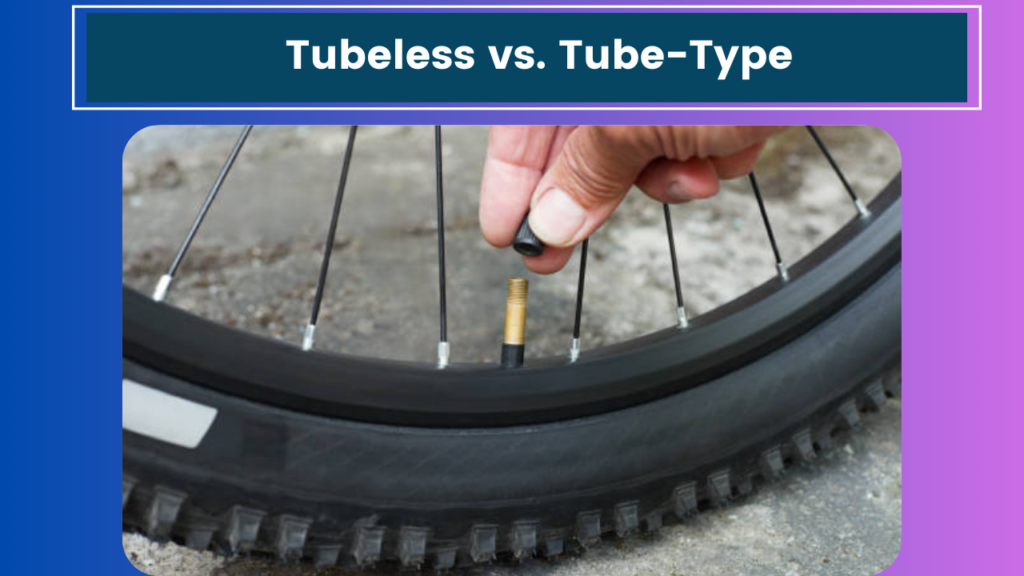
Brand and Model Considerations
While I’m not here to promote any specific brands, it’s worth doing some research on different tire models and reading reviews from other winter cyclists. Some popular winter tire options include:
- Schwalbe Marathon Winter Plus
- Continental Top Contact Winter II
- 45NRTH Xerxes
- Nokian Hakkapeliitta W106
Remember, what works best for one rider might not be ideal for another. Consider your specific needs and conditions when making your choice.
Budget and Longevity
Winter tires, especially studded ones, can be a significant investment. However, think of them as an investment in your safety and enjoyment of winter riding. A good set of winter tires can last several seasons if properly cared for.
To extend the life of your winter tires:
- Store them properly in the off-season (cool, dry place away from direct sunlight)
- Rotate them periodically to ensure even wear
- Avoid unnecessary skidding or hard braking, which can wear down the tread or studs
Installation and Maintenance
Once you’ve chosen your winter tires, proper installation and maintenance are key to getting the most out of them. If you’re not comfortable installing them yourself, most bike shops offer this service.
Throughout the winter, keep an eye on your tire pressure and tread condition. Clean your tires after rides to remove built-up salt and grime, which can accelerate wear.
For studded tires, check the studs periodically and replace any that have fallen out. Some manufacturers sell replacement studs and installation tools.

Don’t Forget About Your Riding Style
Lastly, remember that even the best winter tires aren’t a substitute for cautious riding. Adjust your riding style to the conditions:
- Use lower gears to maintain traction, especially when climbing
- Take corners slower and more upright
- Increase your following distance
- Be extra vigilant for hazards hidden under snow or slush
Wrapping Up
As I wrap up this guide, the snow outside my window has picked up, blanketing the world in white. But you know what? Instead of dreading my commute tomorrow, I’m looking forward to it. With the right tires, winter cycling can be not just manageable, but downright enjoyable.
Choosing the right winter bike tires might seem daunting at first, but armed with this knowledge, you’re well on your way to confidently tackling whatever winter throws at you. Remember to assess your specific needs, consider the pros and cons of different tire types, and don’t be afraid to ask for advice from experienced winter cyclists or your local bike shop.
Now, if you’ll excuse me, I think it’s time to bundle up and take my winter-ready bike for a spin in the freshly fallen snow. After all, there’s something magical about being one of the first to leave tracks on a pristine white path. Stay safe out there, fellow winter warriors, and happy riding!
